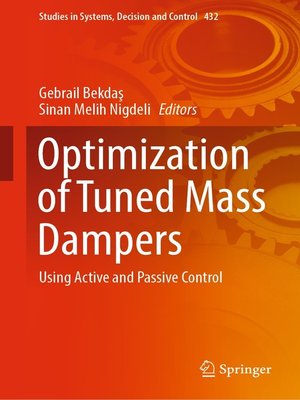Optimization of Tuned Mass Dampers
ebook ∣ Using Active and Passive Control · Studies in Systems, Decision and Control
By Gebrail Bekdaş

Sign up to save your library
With an OverDrive account, you can save your favorite libraries for at-a-glance information about availability. Find out more about OverDrive accounts.
Find this title in Libby, the library reading app by OverDrive.



Search for a digital library with this title
Title found at these libraries:
| Library Name | Distance |
|---|---|
| Loading... |
This book is a timely book to summarize the latest developments in the optimization of tuned mass dampers covering all classical approaches and new trends including metaheuristic algorithms. Also, artificial intelligence and machine learning methods are included to predict optimum results by skipping long optimization processes. Another difference and advantage of the book are to provide chapters about several types of control types including passive tuned mass dampers, active tuned mass dampers, tuned liquid dampers, tuned liquid column dampers and inerter dampers.
Tuned mass dampers (TMDs) are vibration absorber devices used in all types of mechanic systems. The key factor in the design is an effective tuning of TMDs for the desired performance. In practice, several high-rise structures and bridges were designed by including TMDs. Also, TMDs were installed after the construction of the structures after several negative experiences resulting from the disturbing sway of the structures. In optimum design, several closed-form expressions have been proposed for optimum frequency and damping ratio of TMDs, but the exact optimization requires iterative optimization approaches. The current trend is to use evolutionary algorithms and metaheuristic optimization methods to reach the goal.
Tuned mass dampers (TMDs) are vibration absorber devices used in all types of mechanic systems. The key factor in the design is an effective tuning of TMDs for the desired performance. In practice, several high-rise structures and bridges were designed by including TMDs. Also, TMDs were installed after the construction of the structures after several negative experiences resulting from the disturbing sway of the structures. In optimum design, several closed-form expressions have been proposed for optimum frequency and damping ratio of TMDs, but the exact optimization requires iterative optimization approaches. The current trend is to use evolutionary algorithms and metaheuristic optimization methods to reach the goal.







